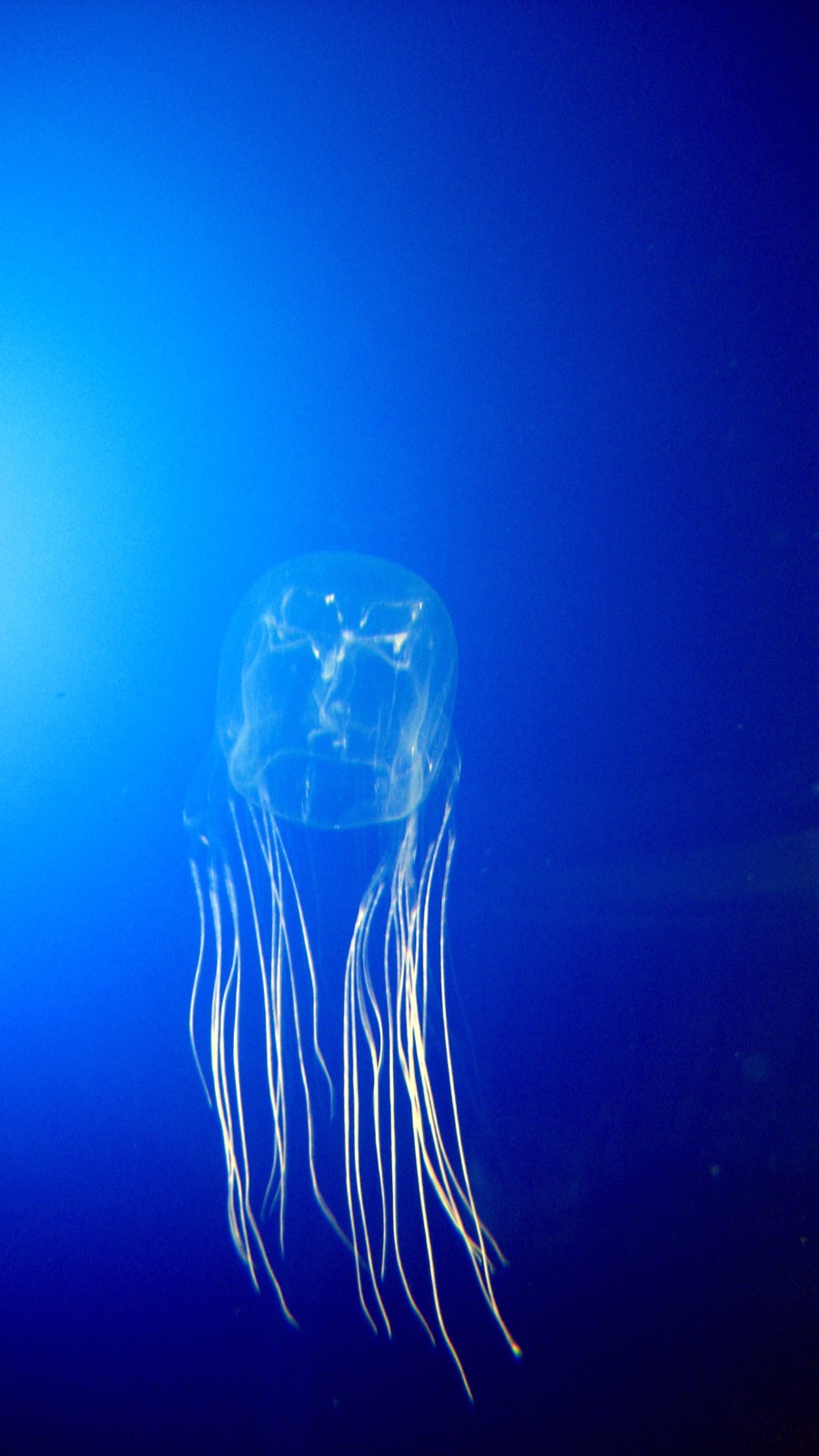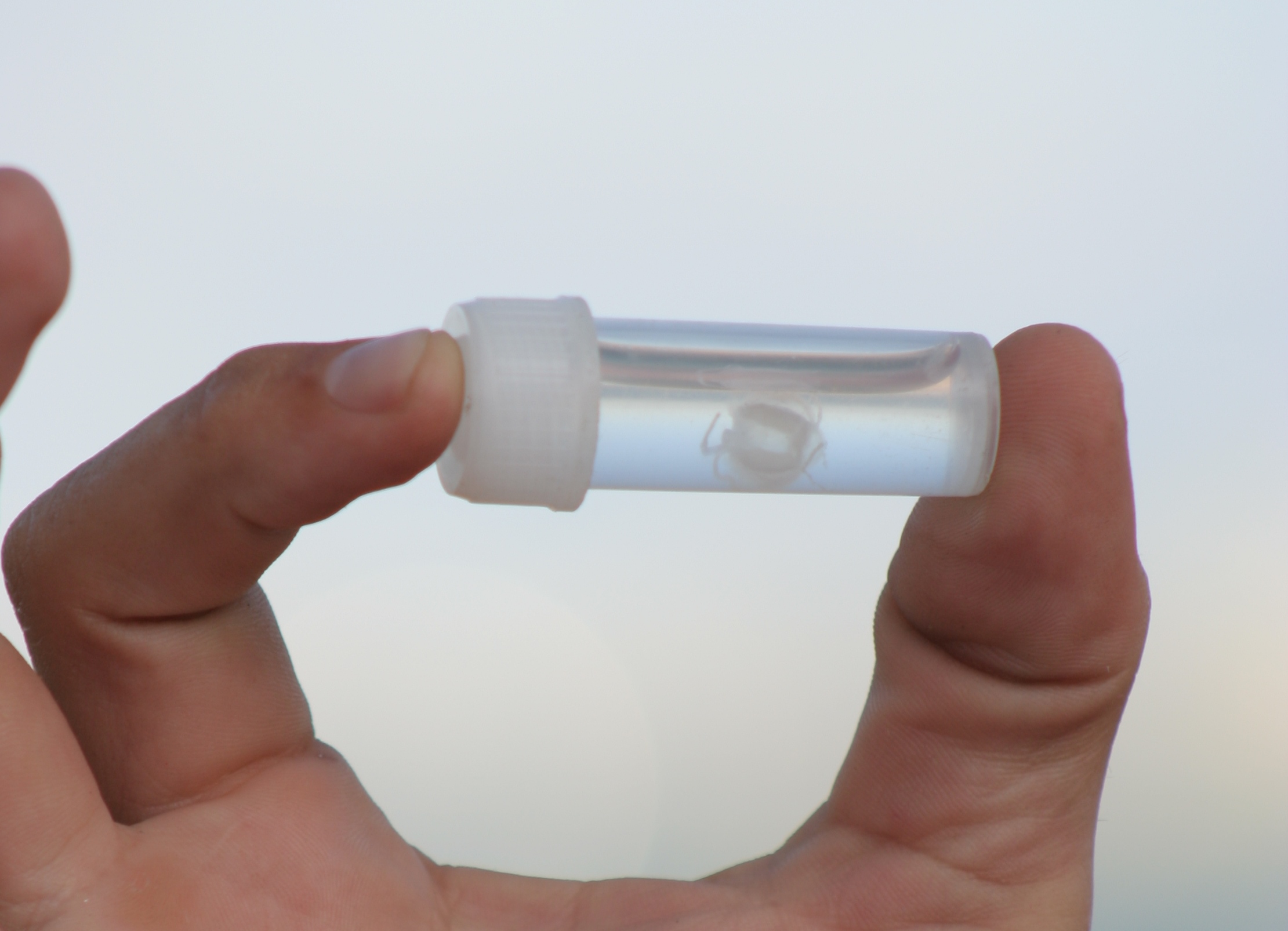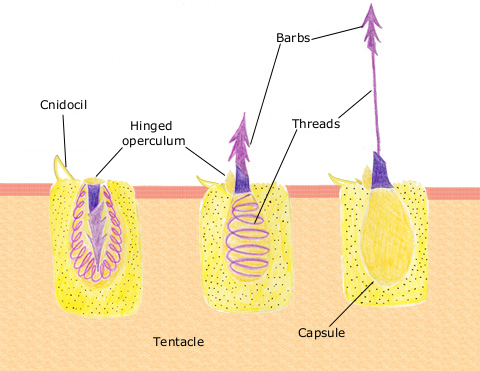
Well, a few minutes ago, I was walking home and I had to navigate through my backyard in order to get a spare key. I was with friends, and I told them to watch for black widow spiders along the way, since we have alot in my backyard. Then I ended up explaining the stages of symptoms one would display if bitten by a female black widow. That got me thinking about venoms and whatnot, and so I figured I'd talk about something of the sort for this post.
Now, it's difficult to quantify what would qualify as the most venomous animal on earth, because of the variance in animals with venom. Some have highly toxic venom but deliver it in small amounts. Some is more corrosive, but less toxic. Others are less likely to bite or sting, and so on and so forth. But if one were to look into it, almost all sources would pinpoint the title of "most venomous" as belonging to Australia's Box jellyfish,
 members of the class Cubozoa. Of this class, only a few species are truly dangerous, the most common of which is the so-called "sea wasp", Chironex fleckeri. Also extremely dangerous is the tiny Irukandji jellyfish, of which there are two species.
members of the class Cubozoa. Of this class, only a few species are truly dangerous, the most common of which is the so-called "sea wasp", Chironex fleckeri. Also extremely dangerous is the tiny Irukandji jellyfish, of which there are two species.The venom of these species is legendary for it's lethality, and in places such as the Philippines, 20-40 people die annually from stings. It is rumored that a sting from one of these species of box jellyfish can kill a person within five minutes and indeed, it is speculated that the chances of survival if stung while swimming alone are "near zero". But how exactly, the inquisitive among you may ask, does this venom work? Well, to understand this, you have to understand the process of injection on a cellular level, which is really quite fascinating when you get right down to it. See, cnidarians (a phylum of animals that includes jellyfish) often use venom of varying toxicity as a means of defense or to subdue prey. To utilize these toxins, they must have a means of actually injecting them into prey.
 And with the absence of jaws or any other sting or fang-bearing parts, cnidarians instead use specialized cells called cnidocytes, also known as nematocytes.
And with the absence of jaws or any other sting or fang-bearing parts, cnidarians instead use specialized cells called cnidocytes, also known as nematocytes.  The purpose of these cells is to detect contact with the tentacle or skin and inject venom upon contact. To do so, they contain organelles within the cell called nematocysts. Each nematocyst is a bulblike structure surrounded by a coiled tube structure. There is a hair-like trigger on the external part of the cell called a cnidocil. When the cnidocil is activated, it causes the release of calcium ions from the inside of the coiled nematocyst. The result is a rapid influx of water into the cell itself from the outside, creating osmotic pressure which then forces the coiled nematocyst our of the cell, with water righting the needle-like center and forcing it into the target organism. The bulb contains venom, which is then injected. Several thousand or more of these cells fire their toxic payloads within nanoseconds, making them one of the fastest reactions in the animal kingdom with an acceleration of over 5 million Gs. Fascinating, isn't it?!
The purpose of these cells is to detect contact with the tentacle or skin and inject venom upon contact. To do so, they contain organelles within the cell called nematocysts. Each nematocyst is a bulblike structure surrounded by a coiled tube structure. There is a hair-like trigger on the external part of the cell called a cnidocil. When the cnidocil is activated, it causes the release of calcium ions from the inside of the coiled nematocyst. The result is a rapid influx of water into the cell itself from the outside, creating osmotic pressure which then forces the coiled nematocyst our of the cell, with water righting the needle-like center and forcing it into the target organism. The bulb contains venom, which is then injected. Several thousand or more of these cells fire their toxic payloads within nanoseconds, making them one of the fastest reactions in the animal kingdom with an acceleration of over 5 million Gs. Fascinating, isn't it?!So, hopefully this interesting fact makes up for my inability to complete composed posts, but not to worry, I'll get back into the regular swing of things. Thanks for reading, and swim safely...
This is why I never go in the ocean. Never ever. When are we going to the aquarium? :D
ReplyDeleteAquarium! Yes! Well, I get back from squirrel work (again) on August 15th, and then I have like nothing until school starts in September. So I'd say we should plan for August.
ReplyDelete